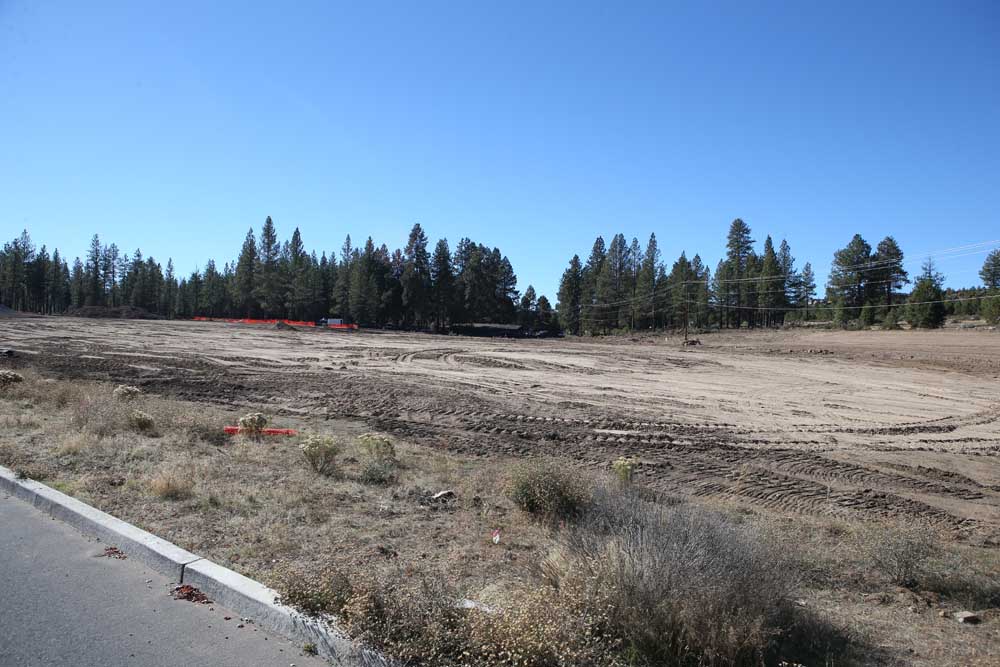Developers clear land near Deschutes National Forest as Bend considers tree code
Published 5:45 am Thursday, November 2, 2023

- An empty lot that will become a 9.9-acre subdivision known as the Lodges at Bachelor View West along SW Century Drive in Bend. The subdivision will include 51 lots for single-unit detached dwellings and another 18 lots for town homes.
A nearly 10-acre parcel of land on Bend’s west side has been cleared of nearly all its trees in preparation for luxury housing. While clearing property has become common in fast-developing Bend, this one stands out for its location: on busy SW Century Drive, where outdoor enthusiasts make their way to the Deschutes National Forest.
The 9.9-acre subdivision — known as the Lodges at Bachelor View West — will include 51 lots for single-unit detached dwellings. Another 18 lots are planned for town homes, according to Aaron Henson, a senior planner with the city of Bend. The development has no affordable housing component.
On its west side is the Loge hotel and 400 yards west along SW Century Drive are signs announcing the national forest.
Twenty-six percent of Bend is covered by trees, according to Google’s Environmental Insights Explorer mapping tool, but clearing land for subdivisions shrinks that percentage. It’s not just dwellings that are replacing forested lots; commercial developments are gobbling up wooded areas, too. Last year, a developer started work on a 13-acre RV park on land previously covered in ponderosa pines.
“The scenic drive from Bend out to the Cascade Lakes Highway continues to see aggressive logging year after year. Across the landscape we need to be doing a better job of protecting our forests,” said Erik Fernandez, wilderness program manager for Oregon Wild, an environmental nonprofit.
Before the trees were cleared, the Lodges at Bachelor View West property contained about 125 so-called “significant trees,” defined as deciduous trees greater than 6 inches in diameter at chest height and coniferous trees 10 inches or greater in diameter, according to a planning document provided to The Bulletin from the city of Bend. The developers cut down 119 such trees, leaving six trees on the property, or 5% of the original tree count.
And then there were six
The six surviving trees avoided the chain saw because they were not in the way of any planned construction on the property, said Henson.
“Those trees were located along the outer edges of the development site, or in places where the site did not need to be cleared and graded in order to build the required public infrastructure improvements,” said Henson.
Lodges at Bachelor View West subdivision is jointly owned by LBV LLC and Entrada Lodge Inc. D.R. Horton, the nation’s largest homebuilder, has been contracted to build the homes on the subdivision.
LBV LLC declined to be interviewed for this story. Entrada did not respond to a request for an interview.
Fernandez, from Oregon Wild, said logging is happening at an “alarming rate” in the area in and around Bend.
“That’s true on the Deschutes National Forest as well as in Bend for various types of developments,” said Fernandez. “There is a cost to carbon storage from losing those trees as well as to the wildlife that depend on them for habitat.”
Bend City Councilor Mike Riley said the challenge in urban development is striking a balance between retaining trees and providing housing.
“One of the hardest things to do now is to address the crisis in a meaningful way in terms of the need for more housing units in our community, but we don’t sacrifice the rest of the values that are important to us,” Riley said. “Broadly speaking, we know that a healthy environment and the natural landscape is very important to Oregonians.”
The developers broke no current laws by clearing nearly all the trees from the land, although a planned tree code being developed by the city could end that practice. The city’s Tree Regulation Update Advisory Committee is preparing new rules for property developers.
The tentative schedule is to have the code adopted by April, said Pauline Hardie, a senior planner with the city of Bend.
Code not finalized
The committee is still in the process of developing its recommendations for the city. A potential option could require developers to save 20% of the large trees on their properties, defined as trees 20 inches in diameter or greater.
The code could allow for other options, including replanting trees or payment in lieu for trees that were required to be preserved. Different combinations of options may also be allowed.
“The goal is to not have a site clear cut,” Hardie told City Council members at a September planning meeting. “Start with a lower option to preserve some of the bigger trees, broaden that so there is flexibility with the smaller trees, then hopefully between those two and some mitigation we still get some trees on site.”
Hardie said the committee is discussing ways to prevent developers from just paying a fee and then clearing a site. This could include allowing several smaller trees to be saved to replace one large tree.
Ariel Mendez, a city councilor, said the focus should be on preserving mature trees. The committee is also looking at different ways to expand Bend’s tree canopy overall, he said.
“We have a housing crisis and also at the same time a climate crisis,” said Mendez. “I hope we will find a way to address both with this update. I’m looking forward to seeing the committee’s recommendations.”






